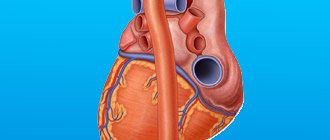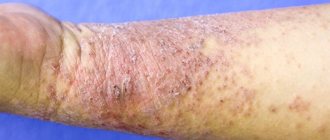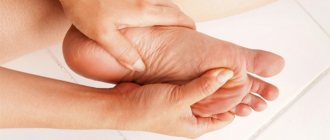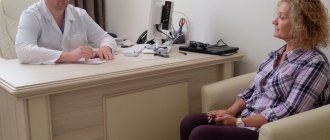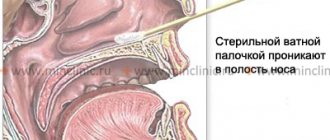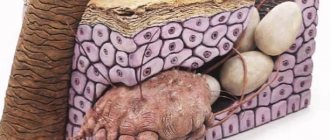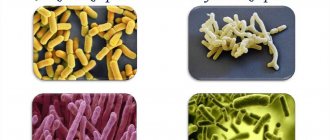Rickets is a disease of children from 2 months to 3 years. It occurs due to a lack of calcium and phosphorus in the body during the period of active growth of the child. As a result, the formation of bone tissue is disrupted - the bones soften, which is why they can become deformed and break.
Rickets often affects babies born prematurely. But minor signs of the disease also occur in full-term babies. With proper care, they disappear on their own and do not require treatment. In rare cases, insufficient bone mineralization occurs in adults. This condition is called osteomalacia.
Causes of rickets
The main cause of rickets is a lack of vitamin D, which is responsible for calcium-phosphorus metabolism in the body. It is found in minimal quantities in food, but the main share is produced in the layers of the epidermis under the influence of ultraviolet rays. Therefore, mothers are advised to take their children for walks in the fresh air more often.
Other factors also influence the absorption and delivery of nutrients to bone tissue:
- gastrointestinal disorder;
- disorders of the liver and kidneys;
- gene mutations (characteristic of hereditary forms of rickets).
Risk factors
There are also risk factors that can provoke the disease.
For the mother, these are the following factors:
- too young or mature age (pregnancy before 18 and after 40 years);
- insufficient exposure to sun and fresh air during pregnancy;
- chronic diseases;
- improper or inadequate nutrition;
- lack of physical activity;
- the interval between births is less than two years;
- third and subsequent births;
- multiple pregnancy.
The child has:
- disturbances in fetal development during gestation;
- improper organization of feeding: underfeeding, overfeeding, selection of food not according to age;
- poor absorption of formula components during artificial feeding;
- digestive problems;
- nervous system disorders.
Rickets in children. Vitamin D
Ruben Garnikovich Minasyan
Vitamin D (calciferol, “carrying calcium”, “sunshine vitamin”). It was first isolated in 1936 from fish oil as a drug that cures rickets. Calciferols are a group of biologically active substances, which include vitamin D2 (ergocalciferol) and vitamin D3 (cholecalciferol).
Vitamin D in the body
The main functions of calciferols are associated with the regulation of calcium and, partly, phosphorus metabolism. The vitamin promotes the absorption of calcium in the small intestine, maintaining its level in the blood, and the deposition of calcium phosphate in the bones. The vitamin is necessary for the normal maturation of skin cells and takes part in the synthesis of melanin pigment. The body's supply of calcium is largely related to the activity of the parathyroid glands, which produce hormones (parathyroid hormone and calcitonin), which, together with vitamin D, ensure the regulation of calcium metabolism.
Symptoms of vitamin D deficiency
Vitamin D deficiency in the body can develop at any age, but there are certain periods when such deficiency is most likely. First of all, this is early childhood (from 2 months to 2-3 years), when a lack of vitamin is manifested by lethargy and irritability, sweating (especially of the scalp and at night), delayed ossification of the fontanelles and late teething. In severe cases of vitamin D deficiency, rickets develops, and children lag behind their peers in both physical and mental development.
In adolescents, vitamin D deficiency can manifest itself as irritability, aggressiveness, erratic and restless behavior.
In adults, vitamin D deficiency is much less common and is likely more often associated with a lack of sunlight (ultraviolet exposure) than with poor diet. Indeed, hypovitaminosis D is more often observed in miners, submariners, and night workers.
A special risk group is pregnant and lactating women, with an increased need for calciferol (up to 15 mcg/day or more), who are often characterized by insufficient intake of vitamin D and calcium and increased consumption of these micronutrients.
In old age, during menopause and menopause, a significant proportion of women develop softening, loosening and thinning of bones with a tendency to fractures of the hands, forearms and hip joints (which is especially dangerous!). In addition, the skin of older people gradually loses the ability to synthesize vitamin D, and these people usually spend less time in the sun.
Rickets in children
As already described above, even during pregnancy and breastfeeding, the consequences of hypovitaminosis D in women are especially dangerous for future offspring. Numerous perinatal factors also predispose to the occurrence of rickets in children: illnesses of the mother during pregnancy, unfavorable course of childbirth. Due to the fact that an intensive supply of calcium and phosphorus from mother to fetus occurs in the last months of pregnancy, a premature baby often has osteopenia at birth - a lower content of minerals in the bones. The development of rickets in children can be provoked by the immaturity of the enzyme systems of the liver, kidneys, skin, or their diseases.
For the normal process of ossification in a child, it is important to have sufficient protein, calcium and phosphorus in the food of both the child and the expectant mother in the correct ratio, trace elements of magnesium and zinc, vitamins B and A.
Rickets is caused by insufficient motor activity of the child, since the blood supply to the bone and electrostatic tension increase significantly with muscle activity.
Signs of rickets
In the initial period in children of the first year of life, changes are noted in the nervous and muscular systems. The child becomes irritable, often restless, flinches at loud sounds, the appearance of bright light, and sleeps restlessly. He develops sweating, especially on the head, and baldness at the back of the head. After 2-3 weeks from the onset of the disease, softness of the bone edges is detected in the area of the large fontanelle, along the sagittal and lamboid sutures, muscle tone decreases, the calcium content in the blood remains normal, and the phosphorus level decreases slightly. Urine examination reveals phosphaturia.
Features of the structure of the newborn’s skull
During the height of the disease, symptoms from the nervous and muscular systems progress. Sweating, weakness, hypotonia of muscles and ligaments increase, and a lag in psychomotor development becomes noticeable. This period is especially characterized by rapid progression of bone changes: softening of the flat bones of the skull, the appearance of craniotabes (softening and thinning of the flat bones of the skull in the area of the greater and lesser fontanelles, above the mastoid process and along the cranial sutures), flattening of the occiput, asymmetrical shape of the head.
The growth of osteoid tissue at the ossification points of the flat bones of the skull leads to the formation of the frontal and occipital tubercles. Because of this, the head takes on a square or buttock-like shape. Deformations of the facial part of the skull may occur - saddle nose, “Olympic forehead”, malocclusion, etc. Teeth erupt later, inconsistently, and are easily affected by caries.
The chest is often deformed. “Beads” are formed on the ribs at the junction of the cartilage and bone parts.
“Chicken breast”, rachitic kyphosis, lordosis, and scoliosis may form. At the level of attachment of the diaphragm on the outside of the chest, a deep recess is formed - the “Harrison groove”, and the costal edges of the lower aperture are turned forward in the form of a hat brim due to the large abdomen.
The leading clinical signs of rickets are bone changes:
HEADS
- craniotabes is determined in the occipital or parietal region, where the skull softens so much that it gives in to compression,
- delay in the appearance of teeth,
CHEST
- rachitic “rosary” as a result of hypertrophy of the cartilage between the ribs and the sternum in the form of thickenings on both sides of the sternum,
- chest deformation,
SPINE
- changes in the bones of the spine are realized in the absence of physiological bends and the appearance of pathological curvatures such as kyphosis, lordosis, scoliosis,
LIMBS
- deformation of the development of the hip joints and bones of the lower extremities, appearing at the end of the first and beginning of the second year of life: O-shaped legs, X-shaped legs, flat rachitic pelvis,
Associated symptoms:
- - muscle weakness,
- - frequent respiratory infections,
- - iron deficiency anemia of varying severity, latent anemia,
- - possible deafness of heart sounds, tachycardia, systolic murmur, atelectatic areas in the lungs and the development of prolonged pneumonia, enlargement of the liver, spleen,
- - the development of conditioned reflexes slows down, acquired reflexes weaken or completely disappear.
Treatment
Therapeutic interventions in children with rickets are aimed at eliminating vitamin D deficiency, normalizing phosphorus-calcium metabolism, eliminating acidosis, enhancing osteoformation processes, and nonspecific correction measures.
Drug treatment for rickets in children involves the administration of vitamin D. There are two types of vitamin D used in children: D2 (ergocalciferol) of plant origin and vitamin D3 (cholecalciferol) of animal origin. These two vitamins differ in chemical structure, and the advantage belongs to cholecalciferol.
Cholecalciferol is available in the form of aqueous “AQUA-D3” and oily “Vigantol” solutions for oral administration. It should be taken only under the supervision of a physician and laboratory tests.
The following symptoms may indicate hypervitaminosis: lack of appetite, frequent urination, possible vomiting. When these symptoms occur, hypercalcemia should be considered. The cause of concern disappears immediately after stopping taking vitamin D.
If bone signs of rickets are detected, the child needs to be examined by an orthopedic doctor.
Bone deformations in children under 1 year of age can be corrected quite easily without the use of special treatment methods, only with the use of vitamin D3.
After a year, bone deformations, especially of the lower extremities, increase sharply and urgent treatment is required. In children under 4 years of age, deformities of the lower extremities can be corrected using conservative methods in 2 to 3 months.
In older children, surgery may be required to correct the deformity.
Dear parents, do not waste precious time, pay close attention to your children, come for a consultation with an orthopedic doctor on time!
Laboratory diagnostics at Euromed LLC include the determination of vitamin D, Ca (calcium), P (phosphorus).
With wishes of health,
Yours Ruben Minasyan
Rickets: symptoms
If the symptoms of rickets are not noticed early, it can lead to bone deformities and developmental delays. The first bells appear from the age of two months:
- frequent and causeless mood swings;
- restless sleep: trembling, convulsions, crying;
- lethargy and poor appetite;
- sweating and itching, especially in the scalp, resulting in hair loss on the back of the head;
- flattening of the back of the head and soft edges of the fontanelle;
- congenital hip dysplasia.
At this stage, violations can be corrected without serious consequences. In the future, the symptoms become more pronounced and dangerous:
- developmental delays: inability to hold head up, sit, stand, crawl, walk;
- short stature and slow weight gain;
- elongated skull with bumps on the forehead and crown of the head;
- rounded tubercles - “rosary beads” at the border of costochondral thickenings;
- an arched depression under the ribs called Harrison's groove;
- “bracelets” on the wrist joints;
- O and X-shaped curvature of the legs;
- convex “frog” belly;
- late teething;
- rachitic hump in babies who were seated early.
Description of the disease
What is rickets? This phenomenon occurs as a result of a lack of vitamins D, which ensure normal metabolism throughout the body. The main disadvantage of this pathology is improper growth and formation of the bone corset.
Most often, the disease manifests itself in children aged 3-4 years. This is due to the rapid growth and gain of muscle mass in babies. The child is quite active and restless. His body requires the maximum amount of vitamins and microelements.
In some cases, in children in the first year of life, improper formation of bone tissue is noted. A similar phenomenon appears already at 3-4 months of life.
Deformation of the skeletal bones is observed during the development of walking. The legs take on an irregular arched shape. The baby develops clubfoot and difficulty moving along a given path.
A lack of vitamin D provokes the leaching of calcium from bone tissue. The bones become loose and empty inside. As the child grows, they are not able to cope with the additional load. As a result, they begin to become severely deformed.
Diagnostics
Possible malfunctions that may be a sign of rickets in children should be detected by the local pediatrician during a routine examination. The doctor’s task is to prescribe vitamin D and refer the baby to see specialists. This could be a neurologist, orthopedist, gastroenterologist or endocrinologist. It all depends on the symptoms.
To make a final diagnosis, the following procedures are required:
- Blood test for calcium, phosphorus, vitamin D, creatinine, alkaline phosphatase and parathyroid hormone. Take it on an empty stomach.
- Urine analysis for calcium, phosphorus and creatinine. Take a morning portion of liquid.
- Digital x-ray of limbs and chest.
If a hereditary form of rickets is suspected, a genetic analysis is performed.
Diagnosis of pathology
To make a correct diagnosis, it is enough to take an x-ray. The image will show the shape and extent of bone tissue damage.
For young patients, a minimum radiation dosage is selected that does not cause significant harm to children's health.
Treatment and prevention of rickets
For the treatment and prevention of rickets, children are prescribed vitamin D: at least 1000 IU per day for infants, 1500-2000 IU for children from one to three years old. Regular walks, massage, therapeutic exercises, and exercises are also recommended. The child should be breastfed or an adapted formula, and complementary foods should be introduced in a timely manner. The diet of older children should be based on foods rich in phosphorus and calcium.
If the disease is caused by disturbances in the functioning of internal organs, then therapy is first aimed at eliminating this pathology.
It is important to understand that such measures are effective only in the early stages. If rickets is detected at the stage of skeletal deformation, it will not go away without consequences. Surgery may be required.
Let's sum it up
Every mother is afraid of the word “rickets,” because it entails many problems for the child, developmental delays, and is considered almost a dirty word. In fact, most parents’ fears are unfounded, because preventing rickets is easy. It is enough to pay attention to the child’s daily routine and feed the baby healthy food.
Don't neglect breastfeeding, because nature knows best what the baby needs. Walking with your child every day in any weather should become a habit and a daily ritual.
Using simple tips and recommendations, you will keep your baby healthy, help your baby develop and actively explore the world.
What are the consequences?
The most severe consequences are associated with changes in the shape of the skeleton, namely:
- curvature of the jaw and, as a result, difficulty chewing, malocclusion, caries and problems with diction;
- deformation of the pelvis and spine;
- mental retardation.
Rickets is a dangerous disease that can leave a mark for life. To prevent this, you need to be attentive to any changes in the child’s behavior and report them to the doctor. You can consult with a specialist and make an appointment by phone or through the online form on our clinic’s website.
FIND OUT PRICES
Degree of development of rickets disease
In terms of severity, the disease can be of the first (mild) degree, second (moderate) and third (severe).
The first degree is asymptomatic. The second is characterized by minor changes in the skeletal system and internal organs. The third is characterized by damage to the nervous system, developmental delays both physical and mental, as well as numerous deformations in the bones and spine.
There are acute, subacute and recurrent course of rickets.
The acute course of rickets is characterized by neurological symptoms and the phenomena of osteomalacia (bone pain, muscle hypotonia, malnutrition, deformation of skeletal bones and pathological fractures).
The subacute course is accompanied by osteoid hyperplasia (proliferation of osteoid tissue). The pathology is manifested by thickening of the wrist, parietal and frontal tubercles, “rachitic rosary”, thickening of the interphalangeal joints on the fingers.
The recurrent degree of development of the disease rickets is characterized by alternating periods of exacerbation and remission with the preservation of residual effects.
Clinical variants of the disease: phosphopenic, calciumpenic and rickets without particularly pronounced changes in calcium and phosphorus levels.
In addition to primary rickets, pediatricians distinguish secondary rickets, which develops against the background of metabolic pathologies, chronic diseases of the kidneys and biliary tract, as well as with long-term use of anticonvulsants.
On our website Dobrobut.com you will find more information about which vitamin deficiency provokes rickets in humans, and you can make an appointment with a pediatrician. If necessary, the center can undergo complete diagnostics, including laboratory tests.
FAQ
Does rickets occur in breastfed children?
Yes, a baby whose mother is breastfeeding may develop rickets if the mother's diet or lifestyle does not provide her body with enough of this vitamin. Therefore, pediatricians prescribe vitamin D preparations prophylactically to all children, including those who are breastfed.
What are the consequences of rickets?
The most severe consequences of the disease are skeletal deformities, including:
- incorrect bite and, as a result, difficulty chewing, impaired diction, jaw deformation, caries;
- rachiocampsis;
- curvature of the pelvis, especially dangerous for girls;
- mental deficiency due to cranial deformation.
These are just some of the adverse effects. Therefore, even with minor symptoms of rickets, the child should be shown to a doctor.
Does a child need to take calcium with rickets?
The need to prescribe calcium supplements becomes clear from the results of laboratory tests. With severe hypocalcemia, the child may need pharmaceutical drugs, which must be combined with an increase in the proportion of calcium-rich foods in the diet - dairy products, legumes, almonds and pistachios.

